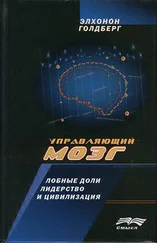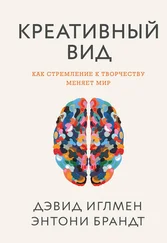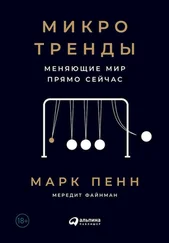29. T. Q. Wu, Z. A. Miller, B. Adhimoolam, D. D. Zackey, B. K. Khan, R. Ketelle, K. P. Ranki, and B. L. Miller, «Verbal Creativity in Semantic Variant Primary Progressive Aphasia», Neurocase 21 (2015): 73–78.
Глава 4. Русалочка и Мастер Лего (а также пещерный человеколев)
1. J. R. Hayes, «Cognitive Processes in Creativity», in Handbook of Creativity, Eds. J. A. Glover, R. R. Ronning, and C. R. Reynolds (New York: Plenum Press, 1989): 135–145; D. K. Simonton, «Creative Development as Acquired Expertise: Theoretical Issues and Empirical Tests», Developmental Review 20 (2000): 283–318.
2. M. Csikszentmihalyi, Creativity: Flow and the Psychology of Discovery and Invention (New York: HarperCollins, 1996).
3. Более подробная информация, см: E. Goldberg, The Executive Brain: Frontal Lobes and the Civilized Mind (New York: Oxford University Press, 2009), and E. Goldberg, The New Executive Brain: Frontal Lobes in a Complex World (New York: Oxford University Press, 2009).
4. J. M. Fuster, The Neuroscience of Freedom and Creativity: Our Predictive Brain (Cambridge, UK: Cambridge University Press, 2013).
5. D. H. Ingvar, «Memory of the Future: An Essay on the Temporal Organization of Conscious Awareness», Human Neurobiology 4 (1985): 127–136.
6. N. Chomsky, Language and Mind, 3rd edn. (Cambridge, UK: Cambridge University Press, 2006); N. Chomsky, Syntactic Structures (Berlin, Germany: De Gruyter Mouton, 1957); N. Chomsky, Aspects of the Theory of Syntax (Cambridge, MA: MIT Press, 1965).
7. E. Goldberg and R. Bilder, «Frontal Lobes and Hierarchic Organization of Neurocognitive Control», in Frontal Lobes Revisited, Ed. E. Perecman (New York: IRBN, 1987): 159–187.
8. D. Everett, «Cultural Constraints on Grammar and Cognition in Pirahã», Current Anthropology 46 (2005): 621–646; A. Nevins, D. Pesetsky, and C. Rodrigues, «Evidence and Argumentation: A Reply to Everett», Language 85 (2009): 671–681.
9. Y. N. Harari, Sapiens: A Brief History of Humankind (New York: Harper, 2015).
10. P. Shipman, The Invaders: How Humans and Their Dogs Drove Neanderthals to Extinction, 3rd edn. (Cambridge, MA: Belknap Press, 2015).
11. S. L. Bressler and V. Menon, «Large-Scale Brain Networks in Cognition: Emerging Methods and Principles», Trends in Cognitive Sciences 14 (2010): 277–290; M. D. Fox, A. Z. Snyder, J. L. Vincent, M. Corbetta, D. C. Van Essen, and M. E. Raichle, «The Human Brain Is Intrinsically Organized Into Dynamic, Anticorrelated Functional Networks», Proceedings of the National Academy of Sciences 102 (2005): 9673–9678.
12. D. Mantini, M. Corbetta, G. L. Romani, G. A. Orban, and W. Vanduffel, «Evolutionarily Novel Functional Networks in the Human Brain?» The Journal of Neuroscience 33 (2013): 3259–3275; R. N. Spreng, W. D. Stevens, J. P. Chamberlain, A. W. Gilmore, and D. L. Schacter, «Default Network Activity, Coupled with the Frontoparietal Control Network, Supports Goal-Directed Cognition», Neuroimage 53 (2010): 303–317.
13. Более подробное описание понятия «функциональная система» в кн.: A. R. Luria, Higher Cortical Functions in Man (New York: Basic Books, 1980).
14. Более подробное обсуждение расцвета когнитивной «модульности» см. в кн.: E. Goldberg, «The Rise and Fall of Modular Orthodoxy», Journal of Clinical and Experimental Neuropsychology 17 (1995): 193–208.
15. D. Wang, R. L. Buckner, and X. H. Liu, «Functional Specialization in the Human Brain Estimated by Intrinsic Hemispheric Interaction», The Journal of Neuroscience 34 (2014): 12341—12352.
16. A. Ardestani, W. Shen, F. Darvas, A. W. Toga, and J. M. Fuster, «Modulation of Frontoparietal Neurovascular Dynamics in Working Memory», Journal of Cognitive Neuroscience 28 (2016): 379–401.
17. R. L. Buckner, J. R. Andrews-Hanna, and D. L. Schacter, «The Brain’s Default Network Anatomy, Function, and Relevance to Disease», Annals of the New York Academy of Sciences 1124 (2008): 1—38.
18. A. R. Luria, Higher Cortical Functions in Man (New York: Basic Books, 1980); E. Goldberg, «The Gradiental Approach to Neocortical Functional Organization», Journal of Clinical and Experimental Neuropsychology 11 (1989): 489–517.
19. E. Goldberg, D. Roediger, N. E. Kucukboyaci, C. Carlson, O. Devinsky, R. Kuzniecky, E. Halgren, and T. Thesen, «Hemispheric Asymmetries of Cortical Volume in the Human Brain», Cortex 49 (2013): 200–210.
20. D. Sridharan, D. J. Levitin, and V. Menon, «A Critical Role for the Right Frontoinsular Cortex in Switching Between Central-Executive and Default-Mode Networks», Proceedings of the National Academy of Sciences 105 (2008): 12569—12574; D. Sridharan, D. J. Levitin, C. H. Chafe, J. Berger, and V. Menon, «Neural Dynamics of Event Segmentation in Music: Converging Evidence for Dissociable Ventral and Dorsal Networks», Neuron 55 (2007): 521–532; S. L. Bressler and V. Menon, «Large-scale Brain Networks in Cognition: Emerging Methods and Principles», Trends in Cognitive Sciences 14 (2010): 277–290.
21. E. Goldberg, The New Executive Brain: Frontal Lobes in a Complex World (New York: Oxford University Press, 2009); M. Koenigs and J. Grafman, «The Functional Neuroanatomy of Depression: Distinct Roles for Ventromedial and Dorsolateral Prefrontal Cortex», Behavioural Brain Research 201 (2009): 239–243.
22. X. J. Chai, S. Whitfield-Gabrieli, A. K. Shinn, J. D. E. Gabrieli, A. N. Castañón, J. M. McCarthy, B. M. Cohen, and D. Öngür, «Abnormal Medial Prefrontal Cortex Resting-State Connectivity in Bipolar Disorder and Schizophrenia», Neuropsychopharmacology 36 (2011): 2009–2017; P. J. Hellyer, M. Shanahan, G. Scott, R. J. Wise, D. J. Sharp, and R. Leech, «The Control of Global Brain Dynamics: Opposing Actions of Frontoparietal Control and Default Mode Networks on Attention», Journal of Neuroscience 34 (2014): 451–461.
23. C. F. Jacobsen, «An Experimental Analysis of the Frontal Association Areas in Primates», Journal of Nervous and Mental Disease 82 (1935): 1—14; C. F. Jacobsen, «Studies of Cerebral Function in Primates. I. The Functions of the Frontal Association Areas in Monkeys», Comparative Psychology Monographs 13 (1936): 1—60.
24. J. M. Fuster and G. E. Alexander, «Delayed Response Deficit by Cryogenic Depression of Frontal Cortex», Brain Research 20 (1970): 85–90; J. M. Fuster, «Unit Activity in Prefrontal Cortex During Delayed-Response Performance: Neuronal Correlates of Transient Memory», Journal of Neurophysiology 36 (1973): 61–78; J. M. Fuster and G. E. Alexander, «Neuron Activity Related to Short-term Memory», Science 173 (1971): 652–654.
25. A. Baddeley, «Working Memory: Looking Back and Looking Forward», Nature Reviews Neuroscience 4 (2003): 829–839.
26. L. D. Selemon and P. S. Goldman-Rakic, «Common Cortical and Subcortical Targets of the Dorsolateral Prefrontal and Posterior Parietal Cortices in the Rhesus Monkey: Evidence for a Distributed Neural Network Subserving Spatially Guided Behavior», Journal of Neuroscience 8 (1988): 4049–4068; P. S. Goldman-Rakic, «Circuitry of the Primate Prefrontal Cortex and the Regulation of Behavior by Representational Memoir», in Handbook of Physiology, The Nervous System, Higher Functions of the Brain, Ed. F. Plum (Bethesda, MD: American Physiological Society, 1987): 373–417; M. L. Schwartz and P. S. Goldman-Rakic, «Prenatal Specification of Callosal Connections in Rhesus Monkey», Journal of Comparative Neurology 307 (1991): 144–162.
27. J. M. Fuster, The Prefrontal Cortex, 5th edn. (London, UK: Academic Press, 2015).
28. W. K. Kirchner, «Age Differences in Short-term Retention of Rapidly Changing Information», Journal of Experimental Psychology 55 (1958): 352–358; S. M. Jaeggi, M. Buschkuehl, W. J. Perrig, and B. Meier, «The Concurrent Validity of the Nback Task as a Working Memory Measure», Memory 18 (2010): 394–412; S. M. Jaeggi, M. Buschkuehl, J. Jonides, and W. J. Perrig, «Improving Fluid Intelligence with Training on Working Memory», Proceedings of the National Academy of Sciences 105 (2008): 6829–6833.
Читать дальше
![Элхонон Голдберг Креативный мозг [Как рождаются идеи, меняющие мир] [litres] обложка книги](/books/395572/elhonon-goldberg-kreativnyj-mozg-kak-rozhdayutsya-id-cover.webp)




![Наталья Царенко - Джентльменами не рождаются, или Секреты воспитания мальчиков [litres]](/books/396504/natalya-carenko-dzhentlmenami-ne-rozhdayutsya-ili-se-thumb.webp)






